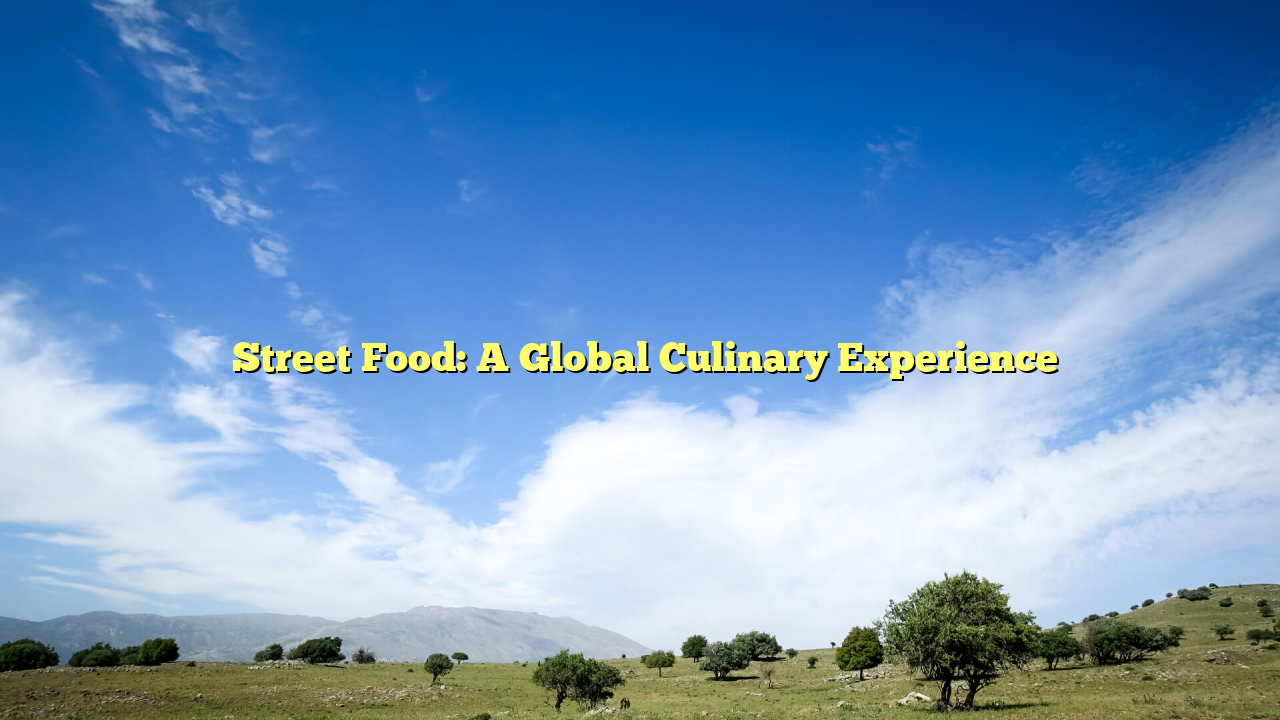Street food is one of the most exciting aspects of global cuisine. Found in bustling markets, roadside stalls, and small food carts, it offers an authentic and affordable taste of local culture. Whether it’s a bowl of steaming pho in Vietnam, spicy tacos in Mexico, or crispy samosas in India, street food is a reflection of a country’s history, ingredients, and culinary traditions.
In this article, we will explore the origins of street food, its cultural significance, popular street foods from around the world, and the impact of globalization on this beloved culinary tradition.
The History of Street Food
Street food has existed for thousands of years. In ancient Rome, vendors sold bread, olives, and porridge to busy citizens who couldn’t afford a home kitchen. In China, street food was an essential part of daily life during the Tang Dynasty, when noodle stalls and dumpling vendors lined the streets.
In the Middle Ages, street food was popular among travelers and laborers who needed quick, affordable meals. Over time, street food evolved to reflect the local ingredients, spices, and cultural influences of different regions. Today, street food remains a vital part of many societies, providing locals and tourists with delicious, inexpensive, and freshly prepared meals.
The Cultural Significance of Street Food
Street food is more than just a quick bite—it is deeply connected to a country’s identity and traditions. It represents:
● Heritage and Tradition: Many street food recipes have been passed down for generations, preserving culinary customs.
● Community and Social Life: Street food markets are gathering places where people connect, share meals, and enjoy cultural experiences.
● Innovation and Creativity: Street vendors continuously experiment with flavors and techniques, creating unique dishes that influence mainstream cuisine.
For many, street food is a way to experience a country’s culture firsthand, offering flavors that can’t be found in high-end restaurants.
Famous Street Foods Around the World
Each country has its own signature street foods that define its culinary landscape. Here are some of the most popular street foods from different regions:
1. Asia
● Thailand – Pad Thai: Stir-fried rice noodles with tofu, shrimp, peanuts, and lime.
● Japan – Takoyaki: Octopus-filled batter balls topped with bonito flakes and sauce.
● India – Pani Puri: Crispy, hollow shells filled with spicy tamarind water and mashed potatoes.
● slot777 – Jianbing: A savory Chinese crepe filled with eggs, scallions, and crispy crackers.
● Vietnam – Banh Mi: A French-influenced sandwich with pickled vegetables and meat in a crispy baguette.
2. Europe
● Germany – Bratwurst: Grilled sausage served in a bun with mustard.
● Turkey – Doner Kebab: Spiced meat sliced from a vertical rotisserie and served in flatbread.
● Belgium – Waffles: Crispy and golden, served with chocolate or fruit.
● Italy – Arancini: Deep-fried rice balls stuffed with meat, cheese, or vegetables.
● Spain – Churros: Fried dough pastries, often dipped in thick hot chocolate.
3. The Americas
● Mexico – Tacos: Corn tortillas filled with meat, cheese, and salsa.
● United States – Hot Dogs: A simple but iconic snack, often topped with mustard and ketchup.
● Colombia – Arepas: Cornmeal cakes filled with cheese, meat, or avocado.
● Argentina – Empanadas: Pastry pockets stuffed with savory fillings.
● Brazil – Acarajé: Deep-fried black-eyed pea balls stuffed with shrimp and spicy sauce.
4. The Middle East & Africa
● Egypt – Koshari: A mix of rice, lentils, pasta, and spicy tomato sauce.
● Morocco – Sfenj: Light, airy doughnuts sprinkled with sugar.
● Lebanon – Manakish: Flatbread topped with za’atar (spiced sesame and sumac).
● South Africa – Bunny Chow: A hollowed-out bread loaf filled with spicy curry.
● Nigeria – Suya: Skewered, spicy grilled meat served with onions and pepper sauce.
These street foods reflect the flavors and traditions of their respective regions, offering a taste of history and local ingredients.
The Impact of Globalization on Street Food
Street food is constantly evolving due to globalization. As cultures mix and people travel more, food vendors have started experimenting with new flavors and international influences. Some key trends include:
1. Fusion Street Food
Street vendors are combining ingredients and cooking techniques from different cuisines, creating unique dishes such as:
● Sushi Burritos (a mix of Japanese sushi and Mexican burritos).
● Korean BBQ Tacos (Korean flavors in a Mexican-style taco).
● Ramen Burgers (burger patties sandwiched between crispy ramen noodles).
Fusion street food appeals to adventurous eaters looking for exciting new flavors.
2. Healthier Street Food Options
With rising awareness of nutrition, many street vendors are offering healthier options by:
● Reducing deep-frying and using grilling or steaming instead.
● Incorporating more vegetables and plant-based ingredients.
● Using whole-grain alternatives for wraps and buns.
3. The Rise of Food Trucks
Food trucks have become popular in cities worldwide, offering gourmet street food in a mobile setting. Unlike traditional food stalls, food trucks often feature modern, high-quality ingredients and experimental flavors.
4. Social Media and Street Food
Platforms like Instagram and TikTok have played a huge role in promoting street food culture. Vendors who create visually appealing dishes gain popularity online, attracting more customers and tourists. Viral street food trends—such as rainbow-colored desserts, cheese pulls, and exotic fruit bowls—have transformed how people experience street food.
Challenges Facing Street Food Vendors
Despite its popularity, street food faces several challenges, including:
● Food Safety Regulations: Many cities enforce strict hygiene standards, making it difficult for vendors to operate.
● Gentrification: As cities modernize, street food stalls are being replaced by upscale restaurants.
● Rising Costs: Increased ingredient prices and rental fees affect small vendors.
Governments and food enthusiasts are working to preserve street food culture by supporting vendors, promoting sustainable practices, and ensuring proper hygiene standards.
The Future of Street Food
Street food continues to evolve, adapting to modern trends while preserving traditional flavors. Some future trends include:
● Sustainable Packaging: More vendors are using biodegradable plates and cups to reduce waste.
● Plant-Based Options: Vegan street food is growing in popularity, with more plant-based dishes becoming available.
● Digital Payments: Mobile apps and digital wallets make buying street food more convenient.
As long as people seek delicious, affordable, and culturally rich meals, street food will remain an essential part of global cuisine.
Conclusion
Street food is more than just a convenient meal—it is a reflection of history, tradition, and cultural identity. From the bustling markets of Bangkok to the food carts of New York City, street food brings people together and provides a unique dining experience.
While globalization has introduced new flavors and challenges, street food continues to thrive by adapting to modern trends. Whether you’re traveling or exploring your own city, trying street food is one of the best ways to experience local culture.
So next time you see a street food vendor, take a bite—you might just discover your new favorite dish!
Street Food: A Global Culinary Experience



